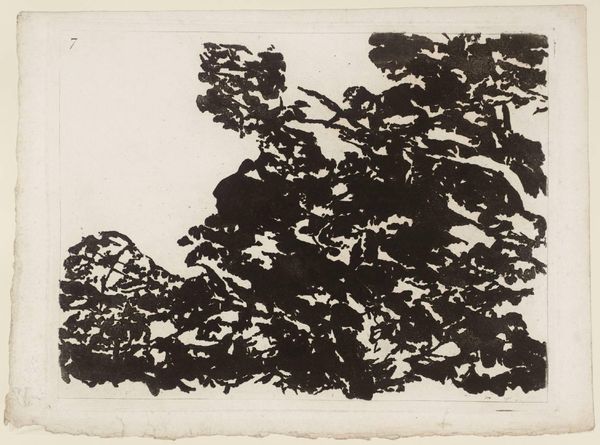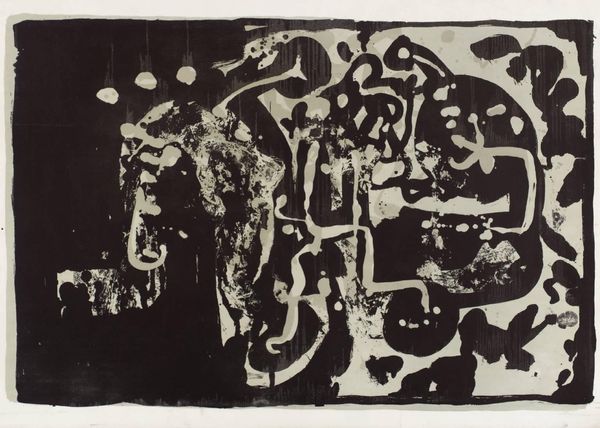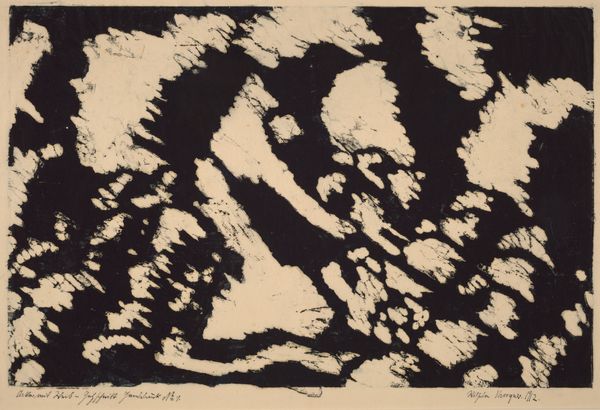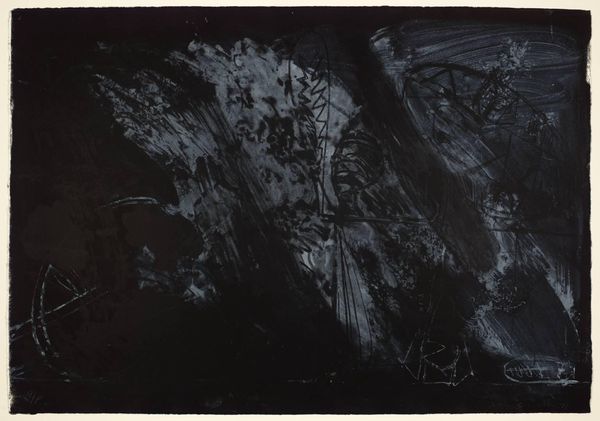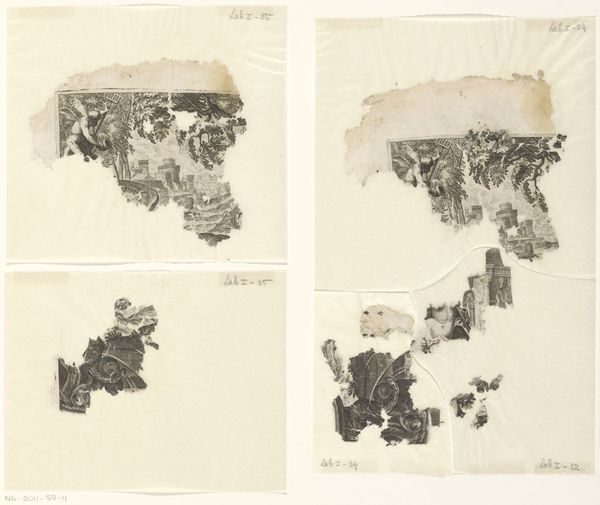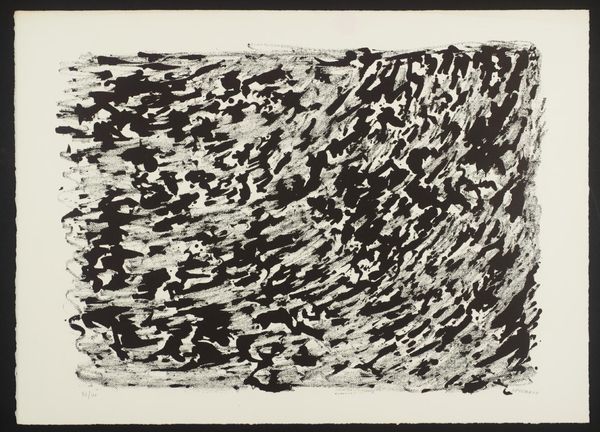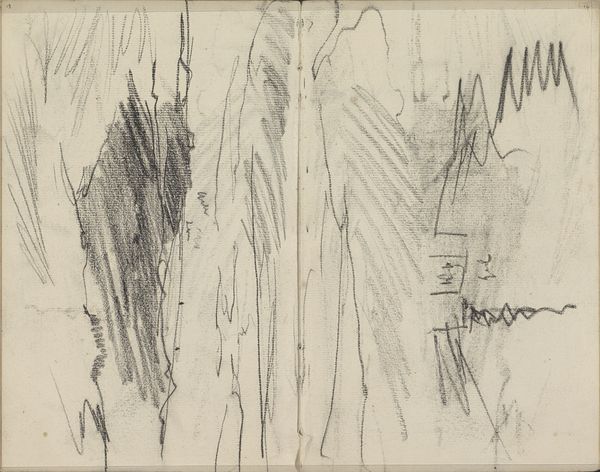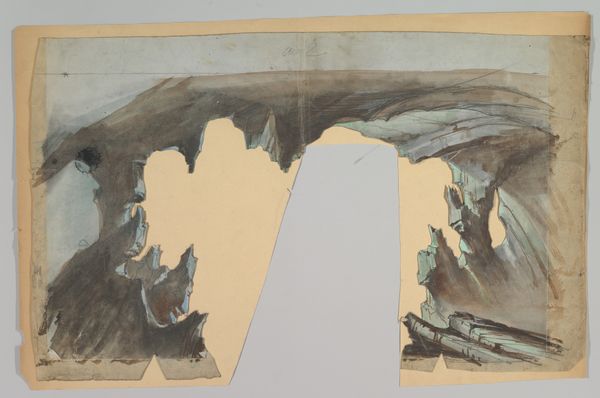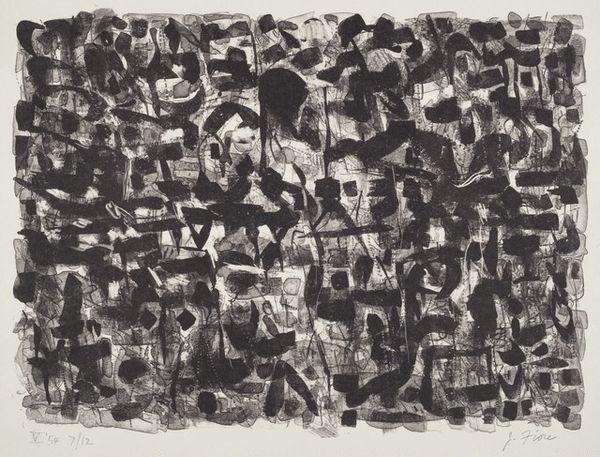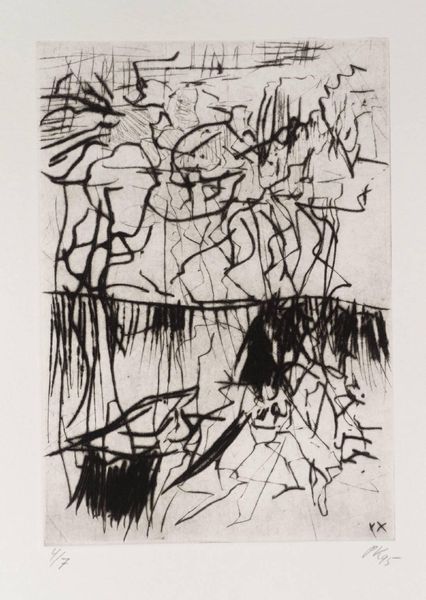
Dimensions: height 285 mm, width 440 mm
Copyright: Rijks Museum: Open Domain
Editor: Here we have Carel Adolph Lion Cachet's "Boeket," a drawing made sometime between 1874 and 1945, now at the Rijksmuseum. It’s quite striking, with the bold use of ink. It feels very immediate, almost like a quick sketch. What stands out to you about this piece? Curator: What I find intriguing is its place within art history and how Cachet engages with, perhaps even critiques, established traditions. Considering the date range, we must think about the shifting artistic landscape during this period. Given the influence of Impressionism, what purpose would a floral study serve during an era defined by social change and political upheaval? Editor: That's a really interesting point. I was just thinking about how pretty it is, but you're right, what role did "pretty" things have at that time? Curator: Exactly. While seemingly apolitical, still life as a genre has historically been used to convey coded messages about wealth, status, even morality. Could Cachet be subverting these expectations with this piece? Is it a deliberate rejection of social commentary? Or perhaps a subtle reflection of a yearning for beauty amidst chaos? The use of what seems like affordable ink and paper seems like it could suggest that too. Editor: It’s definitely given me a lot to consider. I’m now thinking beyond the surface appeal. It's not just a pretty picture; it's a statement within a larger historical context. Curator: Precisely. The beauty is that we're encouraged to question its very existence. Reflecting on how societal shifts influence not only the "what" but also the "why" of art deepens our understanding. Editor: Thanks for pointing that out, seeing this artwork now makes me think more deeply about the world it came from.
Comments
No comments
Be the first to comment and join the conversation on the ultimate creative platform.

